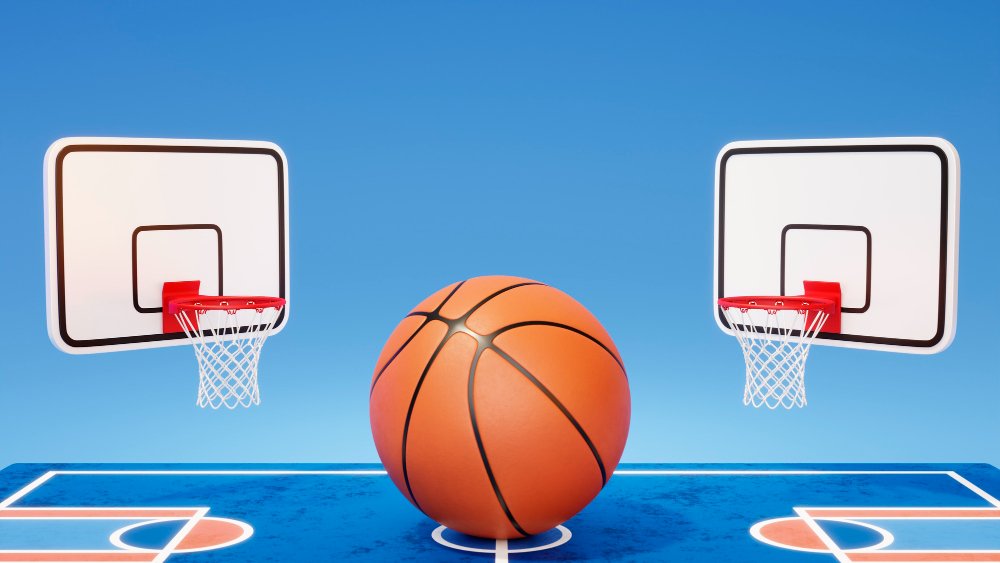Basketball, a globally beloved sport, has a rich visual appeal that often inspires artists and illustrators. Drawing basketball scenes, whether capturing the dynamic motion of a game or the intricate details of a basketball, can be both challenging and rewarding. This comprehensive guide will walk you through Drawing:Cul23ybyzfm= Basketball, the essentials of drawing basketball, including techniques, tips, and common challenges. Additionally, we will address frequently asked questions to further enhance your understanding and skills.
Drawing:Cul23ybyzfm= Basketball:
1. Basketball Players
Proportions and Anatomy:
- Understanding human anatomy is crucial for drawing realistic basketball players. Focus on proportions, including the head, torso, arms, and legs. Basketball players often have exaggerated features due to their athletic build, so pay close attention to muscle definition and body posture.
- Study the body’s movement and how muscles flex and stretch during various actions like shooting, dribbling, or jumping. Reference images of players in action can be invaluable for capturing accurate proportions and dynamic poses.
Movement and Poses:
- Basketball is a fast-paced sport, and capturing the fluidity of movement is essential. Practice drawing players in action poses such as shooting, dunking, or dribbling. Observe real games or use video references to understand how players move and interact with the ball.
- Use motion lines or dynamic angles to convey the speed and intensity of the game. This helps in creating a sense of action and energy in your drawings.
2. The Basketball
In Drawing:Cul23ybyzfm= Basketball, the second step is the basketball:
Shape and Texture:
- A basketball is an oblate spheroid with a distinct textured surface. Focus on getting the round shape right, including the lines and grooves that define its surface.
- Pay attention to light and shadow when drawing the basketball. The light source affects how shadows fall and highlights appear on the ball. Use shading techniques to create a realistic depiction of the basketball.
Drawing:Cul23ybyzfm= Basketball Details:
- Include intricate details such as the stitching and the pattern of the grooves. These details enhance the realism of your drawing. Make sure the color and texture are consistent with a real basketball, including the orange color and black lines.
3. The Basketball Court
Layout and Markings:
- The basketball court has specific markings, including the three-point line, free-throw line, and the key. Accurate depiction of these markings adds authenticity to your drawing. Use reference images of real courts to ensure precision.
- The court’s layout includes the hoop and backboard, which should be proportionate and correctly positioned. Pay attention to the dimensions and perspective to create a believable scene.
Hoop and Backboard:
- The hoop and backboard are central elements in any basketball drawing. Ensure that the hoop is accurately drawn, with the net hanging correctly. The backboard should have the proper angle and size relative to the hoop and court.
Find out about
GoldenGateMax.shop: Maximize Your Shopping Experience
Drawing Techniques for Basketball:Drawing:Cul23ybyzfm= Basketball
1. Sketching
Initial Outline:
- Start with a light pencil sketch to outline the basic shapes and positions of the players, ball, and court elements. This sketch serves as a framework for your detailed drawing.
- Focus on proportions and perspective to ensure accuracy. Use guidelines and reference images to help with placement and scale.
Proportions and Perspective:
- Proper proportions and perspective are crucial for a realistic depiction. Study the principles of perspective to correctly position elements on the court and in relation to each other.
- Practice drawing from different angles to improve your ability to capture realistic depth and perspective.
2. Detailing
Refining the Sketch:
- Once the basic outline is in place, refine the details of the players, ball, and court. Add muscle definition, facial expressions, and other important features.
- Use erasers and additional pencil strokes to clean up and define the details. Pay attention to textures and features to enhance realism.
Shading and Texture:
- Shading adds depth and dimension to your drawing. Use various shading techniques, such as hatching and cross-hatching, to create realistic light and shadow effects.
- Focus on how light interacts with different surfaces. For example, the basketball’s texture and the players’ muscles will have different shading needs.
3. Inking and Coloring
Inking:
- Use fine liners or ink pens to go over the final lines of your drawing. This step adds definition and clarity, making the drawing more visually appealing.
- Be precise with inking to avoid smudges and ensure clean, sharp lines.
Coloring:
- For color illustrations, use colored pencils, markers, or digital tools. Ensure that the colors are accurate and consistent with real-life basketball elements.
- Apply colors thoughtfully, paying attention to light sources and how they affect color shading and highlights.
4. Background and Environment
Court Details:
- Add background elements such as the audience, scoreboard, and arena details to provide context. This enriches your drawing and gives it a sense of place.
- Incorporate details like crowd reactions and arena lights to capture the atmosphere of a live game.
Atmosphere:
- Create an energetic atmosphere by using motion blur or dynamic lines to suggest movement. This adds to the overall excitement of the scene and helps convey the game’s intensity.
Common Challenges and Solutions For Drawing:Cul23ybyzfm= Basketball
1. Capturing Motion
Challenge:
- Drawing fast-moving action, like a basketball dunk or a player’s swift movement, can be challenging.
Solution:
- Use reference images or videos of players in motion. Practice drawing dynamic poses and motion lines to convey speed and action.
2. Proportions and Perspective
Challenge:
- Ensuring accurate proportions and perspective in complex scenes can be difficult.
Solution:
- Study anatomy and perspective principles. Use grids or guidelines to maintain correct proportions and perspective throughout your drawing.
3. Detailing the Basketball
Challenge:
- Achieving realistic texture and details on the basketball can be tricky.
Solution:
- Observe a real basketball closely and replicate its texture, stitching, and shading. Practice drawing from different angles to improve your accuracy.
4. Drawing Realistic Players
Challenge:
- Capturing realistic muscle structure and appearance of players can be challenging.
Solution:
- Use anatomy references and study images of real basketball players. Focus on muscle definition and body posture to create a realistic depiction.
Also, explore
Ztec100.com: Comprehensive Review of the Ultimate Tech Hub
Frequently Asked Questions
- What materials are best for Drawing:Cul23ybyzfm= Basketball?
For traditional drawings, high-quality pencils, fine liners, and colored pencils are recommended. For digital drawings, use a graphics tablet and drawing software like Adobe Photoshop or Procreate.
- How can I improve my basketball drawing skills?
Practice regularly using reference images, study basketball games, and analyze other artists’ work. Consider taking drawing classes or watching tutorials to learn new techniques.
- Are there specific techniques for drawing basketball players in motion?
Yes, use motion lines and dynamic angles to capture movement. Study reference images of players in action and practice drawing various poses to improve your ability to depict motion.
- How do I ensure my basketball court is accurately depicted?
Refer to images of real basketball courts and study the layout and markings. Use guidelines and reference images to maintain accuracy in the depiction of court elements.
- What should I focus on when shading a basketball drawing?
Focus on how light interacts with different surfaces. Use shading techniques to create realistic highlights and shadows, paying attention to the ball’s texture and the players’ muscles.
Verdict On Drawing:Cul23ybyzfm= Basketball
Drawing basketball scenes can be both challenging and rewarding. By focusing on key elements such as player anatomy, basketball details, and court layout, and employing effective drawing techniques, you can create dynamic and compelling basketball illustrations. Practice regularly and utilize reference materials to refine your skills and capture the excitement of the game.















